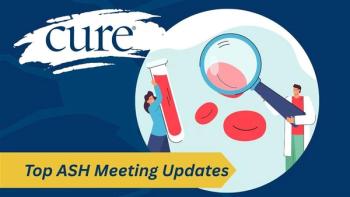
Genetic Variations Influence Relapse Risk for Some Children with B-ALL
Researchers have identified genetic differences that can make leukemia relapse more or less likely among pediatric patients.
There are genetic variations that can influence relapse risk among children with standard-risk B-cell acute lymphoblastic leukemia (SR B-ALL), researchers have found.
Findings from the research, conducted by scientists from St. Jude Children’s Research Hospital; Seattle Children’s; and the Children’s Oncology Group, was published in the Journal of Clinical Oncology.
Researchers sequenced samples from 1,381 children with SR B-ALL, and 115 children with high-risk B-ALL with favorable cytogenic features enrolled in Children’s Oncology Group trials, and then analyzed 439 patients who relapsed and 1,057 who remained in complete remission for at least five years.
“Accurately predicting outcome in children diagnosed with SR B-ALL or [high-risk] cases with favorable genetics is critical for tailoring treatment intensity to maximize cure and minimize toxicity,” researchers wrote. “However, because of the lack of large studies of uniformly treated ALL analyzed with comprehensive genomic approaches, recent studies refining the genetic taxonomy of B-ALL have not adequately addressed this question. To address this gap, we conducted integrated genomic analysis on a large group of patients using a design that specifically enriched for relapsed cases. Our approach identified multiple genomic alterations associated with treatment outcome, including adverse genetic features in patients otherwise considered to be at very low risk of relapse.”
Researchers found that subtypes of ALL, genetic alterations and patterns of extra or missing chromosomes were associated with both a risk of relapse and time to relapse, according to the news release, which explained that while subtypes such as hyperdiploid and ETV6::RUNX1 ALL, had a low risk of relapse, others such as PAX5-altered, TCF3/4::HLF, ETV6::RUNX1-like and BCR::ABL1-like were associated with an increased risk of relapse.
“The study contributes to the de-intensification strategies which can minimize the toxicity without increasing the risk of relapse in SR ALL by refining the current risk predictors. Future studies should validate these findings,” noted Journal of Clinical Oncology associate editor Dr. Suzanne Lentzsch in a commentary published with the study.
ALL is the most common childhood cancer, according to a news release from St. Jude, with remission rates of over 90% and approximately 15% of patients who achieve remission later experiencing a relapse. Approximately half of the children with ALL that relapse have SR B-ALL, according to the news release.
“ALL, as the most common childhood cancer, is a great success story with over 90% of children cured. But there remains a population of children whose disease is not fully cured, and we've not completely understood why that's the case,” stated co-senior author, Dr. Charles Mullighan, St. Jude Comprehensive Cancer Center Deputy Director and Department of Pathology member. “This study focused on that group of poorly understood cases, where we know less about the features that influence the risk of treatment not working and the disease coming back.”
“We are planning to reduce conventional therapies in the future for children with ALL because we know that many patients can be cured with less therapy,” explained co-senior author Dr. Mignon Loh, leader of Seattle Children’s Cancer and Blood Disorders Center, COG ALL Committee chair emeritus, Seattle Children’s Ben Towne Center for Childhood Cancer Research director and head of Seattle Children’s Division of Pediatric Hematology, Oncology, Bone Marrow Transplant and Cellular Therapy, in the news release. “We want to make sure we accurately identify those children, and because of the special design of the study, this project allowed us to do just that.”
“Whole genome sequencing was important to accurately and comprehensively identify these changes, and they could not all have been identified without it,” stated Mullighan in the release. “Children with SR ALL should have their tumor cell genome sequenced upon their initial diagnosis to identify if their tumor cells have these high-risk features, so that their initial therapy intensity can be increased.”
For more news on cancer updates, research and education, don’t forget to





